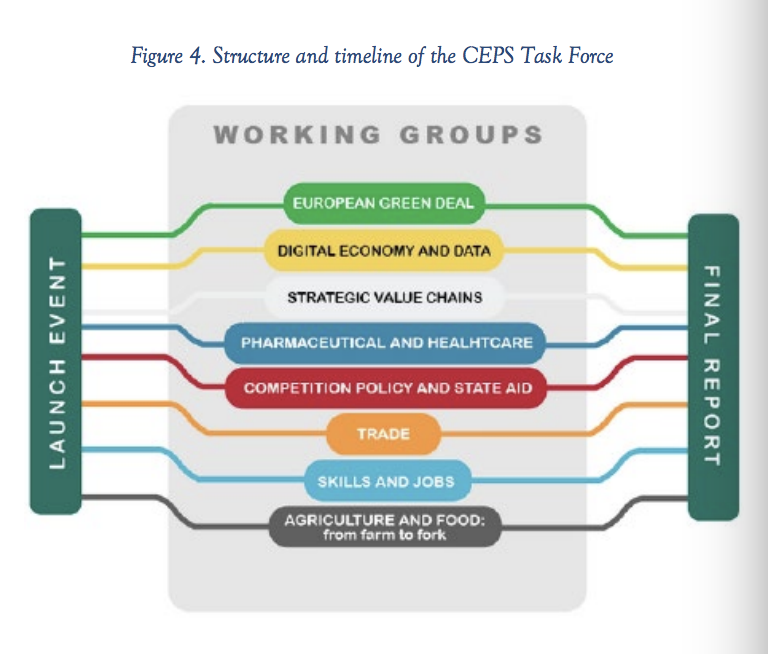
On 2 June 2021, the Centre for European Policy Studies (CEPS) Taskforce on the New Industrial Strategy for Europe published an executive summary of the report “Towards a resilient and sustainable post-pandemic recovery” (the full version will be published by July 2021).
The report, edited by Andrea Renda and Malorie Schaus with the support from Cdp, Hidden Treasures Programme, Energy Transition Initiative, ECMI, King’s College of London, efpia, FEPS, Intesa Sanpaolo, seeks to encourage the EC to be bold and ambitious towards an Industry 5.0 paradigm.
In the introductory part, the executive summary represents as coming from a “phase of industrial policy winter” and the productivity gap with the US and China, the von der Leyen Commission focused on putting sustainability upfront in the industrial strategy, through the Green Deal, the Just Transition and the 2020 Communication on the industrial strategy.
Then, the pandemic obliged a refocus on the strategy to ensure greater resilience as a top priority for EU institutions and a 2021 updated Communication on the industrial strategy with a new “open strategic autonomy” trade mindset.
The CEPS, faced with the prospect of the pandemic effects, decided to support the EU by developing an industrial strategy fit for a brighter future.
The work of the Taskforce has been divided into eight working groups:

(Figure 4, executive summary report, p. 12)
The executive summary is divided into two main parts, being general Recommendations (Part 1) and Working Groups’ Recommendations (Part 2), followed by a final complete list of all the recommendations (p. 66).
There are 105 proposals from the Taskforce to improve EU industrial strategy. Those are backed by 25 Institutions, 90 corporations and 103 representatives from academia and civil society.
The focuses of the General Recommendations are to:
- Adopt a fully-fledged strategy, including mission, timeline, adequate governance, and indicators to track progress.
- Embrace the ‘North Star’ of its industrial strategy as a refined version of the Industry 5.0 paradigm
- Embrace a European enterprise model as a new approach to capitalism by fixing the economics behind the industrial strategy
- Consolidate and streamline the many initiatives launched to support industry at the EU level.
- Fix multilevel governance: Next Generation EU is a ‘once-in-a-century’ opportunity to rebuild, reshape and repurpose Europe’s industry.
- ‘What gets measured gets done’: choose future-proof indicators for systemic transformation
The Working Groups’ Recommendations are divided into “The European Green Deal”, “The Digital Transition”, “Strategic Value Chains”, “Jobs and Skills”, “Competition Policy and State Aid”, “Healthcare and Pharmaceuticals”, “Agriculture and Food”, “Trade Policy”, “Capital Markets”.
Each of the above-mentioned sections is authored by leading experts in the subjects. It is possible to find the detailed analysis and recommendations of each section between page 17 and 56 of the executive summary.
The relevance of such report is given by the aim to convene policymakers, industry experts, civil society and academics to discuss the priorities of the EU’s industrial strategy and to support the EU institutions. The report is not limited to a mere critical analysis but proposes practical principles and ideas to relaunch Europe’s economy, as a general and in each specific main sector.

Luca Megale
is a PhD Student at LUMSA University of Rome
and tutor of the European Master in Law and Economics - EMLE (Rome term).
Submitted on Thu, 06/17/2021 - 17:57

